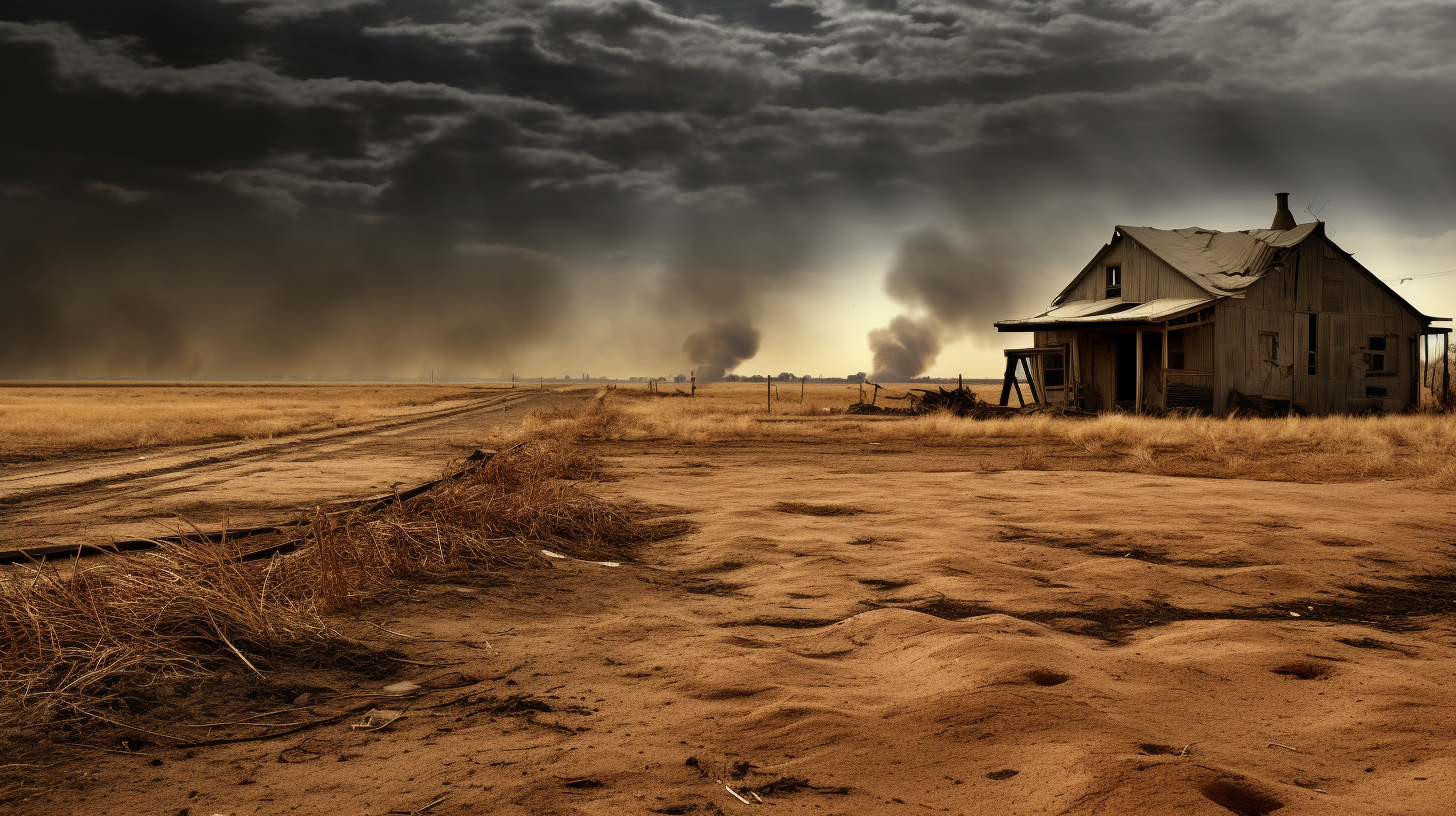Amidst the desolate panorama, where the horizon once bloomed with emerald waves of grain, now stretches a tawny ocean of dust and despair. ‘The New Dust Bowl,’ as it has been coined by the few who dare still wander these forsaken lands, harks back to the ecological nightmares of the past, amplified into a bitter present symphony by the relentless march of climate change. This is the chronicle of a forgotten farm, a microcosm of global negligence.
It stands isolated, a monolith of decay, the farmhouse’s hollow windows gape as they testify to a vanished domesticity. Gone are the days of bountiful harvests and familial laughter – such memories are as ephemeral as the soil that once nourished them. Now, the residue of the Anthropocene gathers in silted layers upon abandoned thresholds and in the creases of the land.
‘Nature’s relentless siege’ – a local elder describes it, his skin leathered from years of battling the elements, eyes reflecting a mingling of sorrow and resignation. ‘Our toil meant something once, but now, we’ve found our efforts were but whispers against the storm.’ He is the chronicler of this chapter, his tales woven with the grief of watching an era’s silent suffocation beneath an arid blanket.
The farm’s graveyard of machines, rust-eaten and crippled, betrays innovation’s impotence against a ravaged ecosystem. Here, high-yield tractors and harvesters lie in repose, obsolete icons of an age that believed in the triumph of technology over nature. They stand as a stark reminder that in this new dystopia, such dreams of mastery are no more than relics on display in the museum of human hubris.
Ironically, the farm’s collapse runs parallel to a world that continues to consume, unabated and oblivious, to the mounting costs of its appetite. While metropolises clamber for locally sourced produce, they remain naïvely detached from the desiccated realities beyond their borders. The irony of the ‘farm-to-table’ movement is made cruelly palpable here, where there is no ‘table’ nor ‘harvest’ to speak of, their fates sealed by a world driven to consume its own life-giving resources to the point of exhaustion.
Climate refugees, their plights relegated to statistics and sound bites, tell tales akin to the stories of the Dust Bowl migrants of old. They journey with hopes of finding greener pastures, only to be confronted by the stark truth that such pastures are ever-receding mirages on the expansive map of human folly.
In what can now only be described as a surreal twist, crop circles, once speculated to be messages from extraterrestrial life, form spontaneously as the only remaining patterns in the dust – not of alien origins, but as mocking epitaphs inscribed by whirlwinds on the tomb of agricultural prosperity.
It is not without reason that such tales of despair resonate with the epitaphs of bygone tropical rainforests or the echoes of worldwide famines, too grim to incite more than a superficial shake of the head from the distant observer. In silence, this farm bears witness to the ceaseless theses of our own undoing.
To chronicle such decline is not to delight in morbidity, but to illustrate a narrative that, while rooted in disheartening reality, seeks to stir the consciousness of those unacquainted with the severity of our planet’s plight. This farm, both real and representational, is a stark canvas upon which the story of our age is painfully inscribed.
As the sun fades on the horizon, casting long shadows that reach with languid fingers to claw at the remnants of humanity’s failed agrarian dreams, the dusk seems to whisper a cautionary lullaby, sung by the ghosts of the old world, to the unborn generations destined to sift through the ashes of their inheritance.
